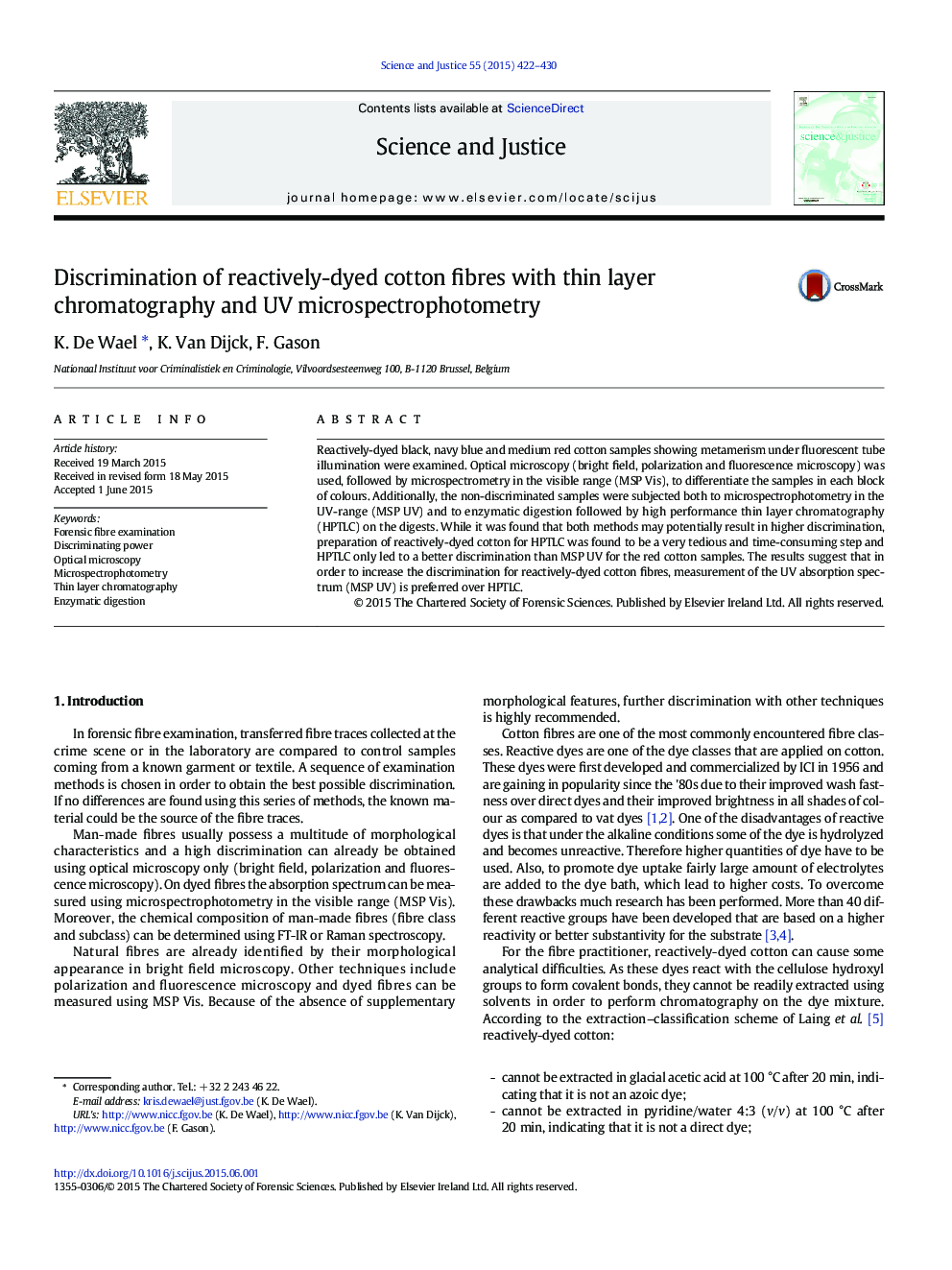| کد مقاله | کد نشریه | سال انتشار | مقاله انگلیسی | نسخه تمام متن |
|---|---|---|---|---|
| 106902 | 161727 | 2015 | 9 صفحه PDF | دانلود رایگان |

• Discrimination study using LM, MSP Vis and MSP UV or HPTLC on reactively dyed black, navy blue and medium red cotton samples
• Same discrimination with MSP UV and HPTLC for black samples
• Much higher discrimination with MSP UV for blue samples
• Somewhat higher discrimination with HPTLC for red samples
• Advantages and inconveniences of MSP UV and of HPTLC are discussed.
Reactively-dyed black, navy blue and medium red cotton samples showing metamerism under fluorescent tube illumination were examined. Optical microscopy (bright field, polarization and fluorescence microscopy) was used, followed by microspectrometry in the visible range (MSP Vis), to differentiate the samples in each block of colours. Additionally, the non-discriminated samples were subjected both to microspectrophotometry in the UV-range (MSP UV) and to enzymatic digestion followed by high performance thin layer chromatography (HPTLC) on the digests. While it was found that both methods may potentially result in higher discrimination, preparation of reactively-dyed cotton for HPTLC was found to be a very tedious and time-consuming step and HPTLC only led to a better discrimination than MSP UV for the red cotton samples. The results suggest that in order to increase the discrimination for reactively-dyed cotton fibres, measurement of the UV absorption spectrum (MSP UV) is preferred over HPTLC.
Journal: Science & Justice - Volume 55, Issue 6, December 2015, Pages 422–430